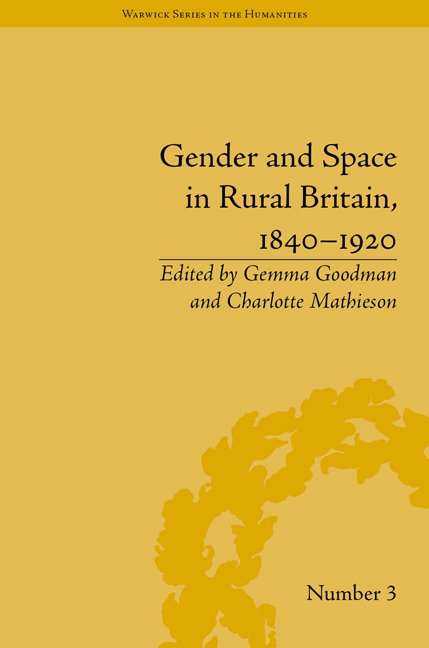Book contents
- Frontmatter
- Contents
- Acknowledgements
- List of Contributors
- Introduction: Gender and Space in Rural Britain, 1840–1920
- 1 Women in the Field
- 2 ‘Between Two Civilizations’: George Sturt's Constructions of Loss and Change in Village Life
- 3 At Work and at Play: Charles Lee's Cynthia in the West
- 4 ‘Going Out, Going Alone’: Modern Subjectivities in Rural Scotland, 1900–21
- 5 ‘Drowned Lands’: Charles Kingsley's Hereward the Wake and the Masculation of the English Fens
- 6 ‘Wandering Like a Wild Thing’: Rurality, Women and Walking in George Eliot's Adam Bede and The Mill on the Floss
- 7 ‘I Never Liked Long Walks’: Gender, Nature and Jane Eyre's Rural Wandering
- 8 Gertrude Jekyll: Cultivating the Gendered Space of the Victorian Garden for Professional Success
- 9 From England to Eden: Gardens, Gender and Knowledge in Virginia Woolf's The Voyage Out
- 10 The Transnational Rural in Alicia Little's My Diary in a Chinese Farm
- Notes
- Index
9 - From England to Eden: Gardens, Gender and Knowledge in Virginia Woolf's The Voyage Out
- Frontmatter
- Contents
- Acknowledgements
- List of Contributors
- Introduction: Gender and Space in Rural Britain, 1840–1920
- 1 Women in the Field
- 2 ‘Between Two Civilizations’: George Sturt's Constructions of Loss and Change in Village Life
- 3 At Work and at Play: Charles Lee's Cynthia in the West
- 4 ‘Going Out, Going Alone’: Modern Subjectivities in Rural Scotland, 1900–21
- 5 ‘Drowned Lands’: Charles Kingsley's Hereward the Wake and the Masculation of the English Fens
- 6 ‘Wandering Like a Wild Thing’: Rurality, Women and Walking in George Eliot's Adam Bede and The Mill on the Floss
- 7 ‘I Never Liked Long Walks’: Gender, Nature and Jane Eyre's Rural Wandering
- 8 Gertrude Jekyll: Cultivating the Gendered Space of the Victorian Garden for Professional Success
- 9 From England to Eden: Gardens, Gender and Knowledge in Virginia Woolf's The Voyage Out
- 10 The Transnational Rural in Alicia Little's My Diary in a Chinese Farm
- Notes
- Index
Summary
In 1909, Virginia Woolf wrote of her developing novel that she wanted to ‘bring out a stir of live men and women, against a background’, feeling that she was ‘quite right to attempt it, but it is immensely difficult to do’. The novel in question became The Voyage Out (1915), a text where the ‘background’ is anything but secondary to the liveliness of its characters. Woolf's emphasis on the locations and environments featured in the novel can be seen in her choice of title, which invokes the travel or adventure narrative, both of which are heavily reliant on a physical journey through space. Like Richard Hakluyt's Voyages and Discoveries (1582) and Charles Darwin's Voyage of the Beagle (1839) – two texts which are known to have exerted a direct influence on Woolf – the narrative trajectory traces a line from the known spaces of home to the unknown landscapes beyond Britain. Yet what distinguishes these texts is that Woolf's protagonist is a woman, and her experience of travelling through these spaces is told in relation to the cultural politics of space and sexuality that governed Woolf and her contemporaries. The importance of the ‘backgrounds’ in the novel thus place the themes of physical access and visibility at the centre of Woolf's feminist subtext.
- Type
- Chapter
- Information
- Gender and Space in Rural Britain, 1840–1920 , pp. 131 - 144Publisher: Pickering & ChattoFirst published in: 2014

